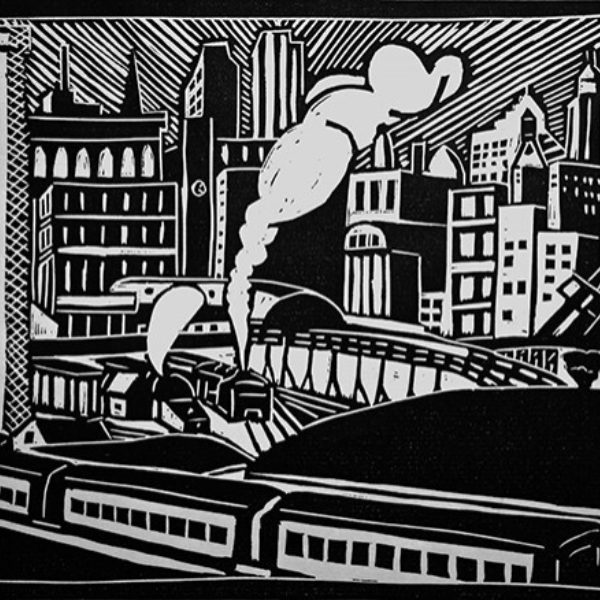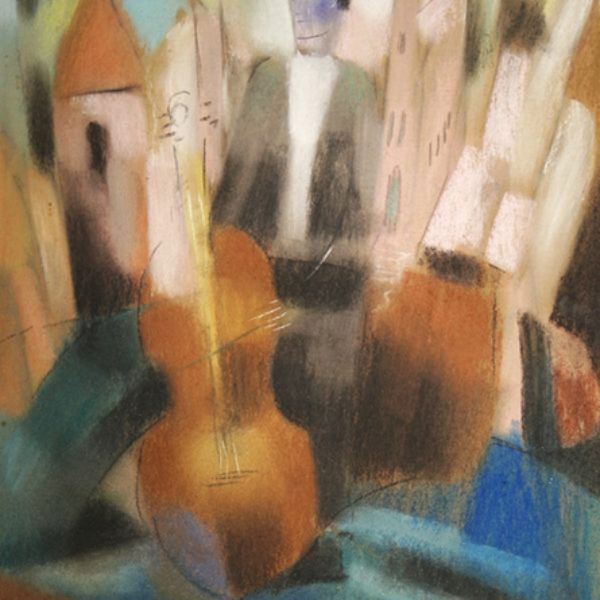William Jacobs
b. 1897, Chicago, IL - d. 1973, Chicago, IL
A Chicago native, William Jacobs studied at the School of the Art Institute of Chicago (SAIC) and at Hull House with German Expressionist artist Herman Sachs and urban realist painter Enella Benedict. During the early 1930s, Jacobs painted in Dayton, Ohio, and Chicago and participated in the Works Progress Administration, completing murals at Spaulding High School in Chicago.
In J. Z. Jacobson's 1933 book, Art of Today: Chicago, Jacobs described his interest in Expressionism and his approach to depicting urban scenes in the Depression era:
I consider my work an expression of the age. I am painting industrial subjects and find them very interesting. . . . I have painted many street scenes in Chicago, particularly the Maxwell Street market. Therefore, I suppose, it might be said that my work is peculiarly Chicagoan.
I believe that art should be universal in spirit, and therefore I do not consider my work an expression of the spirit of any national, racial, religious, political, social or economic group, body, background or attitude.
This outlook is readily visible in works that combine modern and traditional elements of everyday life in the city by depicting folksy subjects with abstract, cubist flair. His woodcut, Chicago, captures the bustle of industry in the city, with trains billowing large streams of smoke against a horizon of factories and skyscrapers. The woodcut technique, however, lends an old-world charm to the modern metropolis. Jacobs’s contribution to the Birobidjan portfolio, a woodcut entitled Persecution, illustrates a German Expressionist influence as well as his interest in Jewish history and quest for autonomy. As soldiers force refugees to march, one individual raises his fist in rebellion—a bold cry for individuality and justice.
In Untitled (Man with cello), Jacobs conveys a musical rhythm through the angled buildings sprouting in the background, and a zigzag pattern on the floor. In Market Day, a woman weighs a chicken on a hanging scale, seen through what looks like an iron gate, and functions to superimpose an abstracted pattern on the market scene. These pastel drawings each depict quotidian scenes of modern life, at the same time, they allowed Jacobs to experiment with figurative abstraction and the visual language of modernism.
Lisa Meyerowitz
References
Art and Democracy: Selected Hull-House Artists from the Settlement, 1889–1963. Text by Anna Mascorella and Teresa Silva. Chicago: University of Illinois, Architecture and the Arts and Jane Addams Hull-House Museum, 2010.
Jacobsen, J. Z. Art of Today: Chicago, 1933. Chicago: L. M. Stein, 1932.
Oakton Community College. A Gift to Biro-Bidjan: Chicago, 1937: From Despair to New Hope. Exhibition website, http://www.oakton.edu/museum/Jacobs.html.
Yochim, Louis Dunn. Harvest of Freedom: A Survey of Jewish Artists in America. Chicago: American References, 1989.

